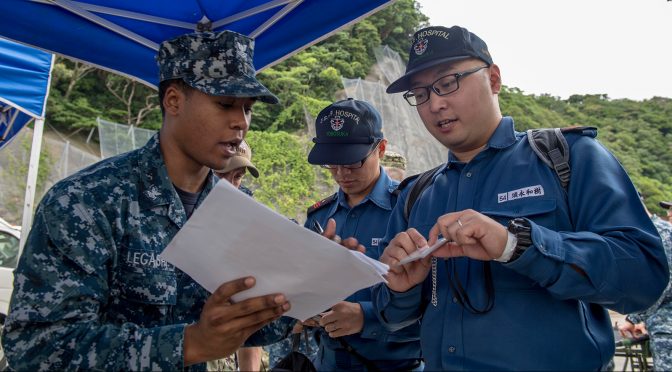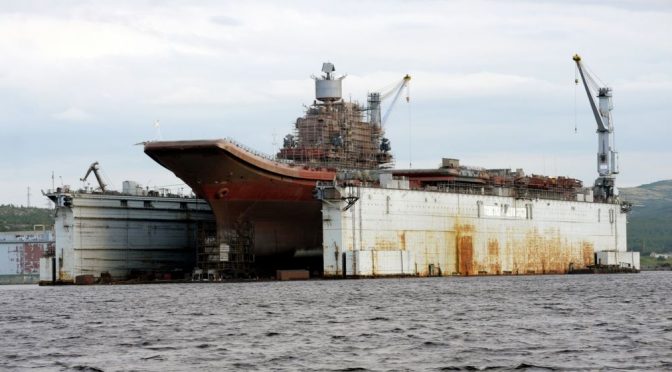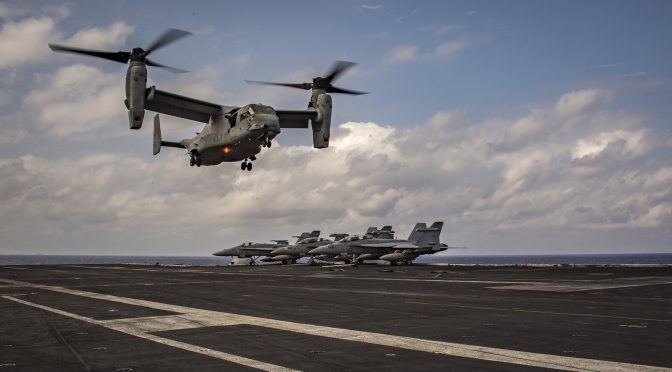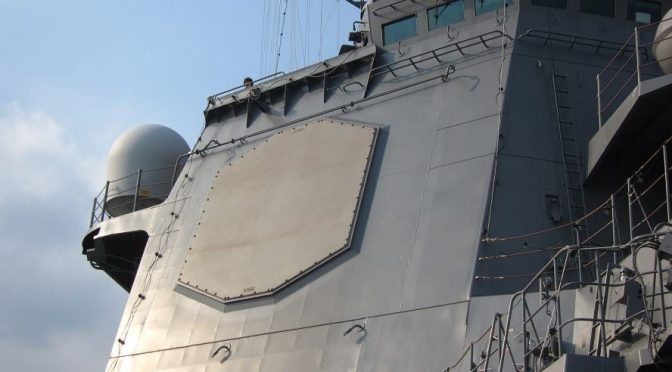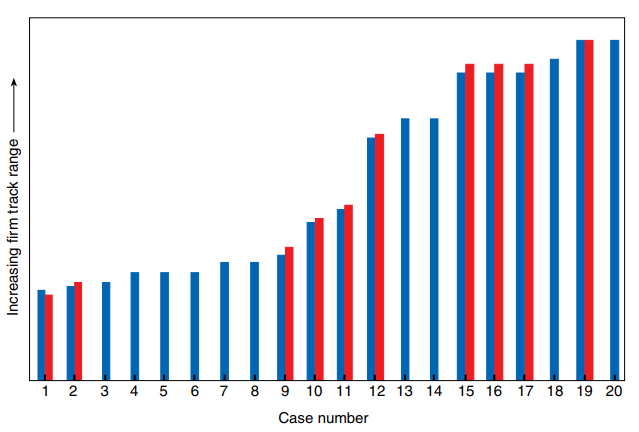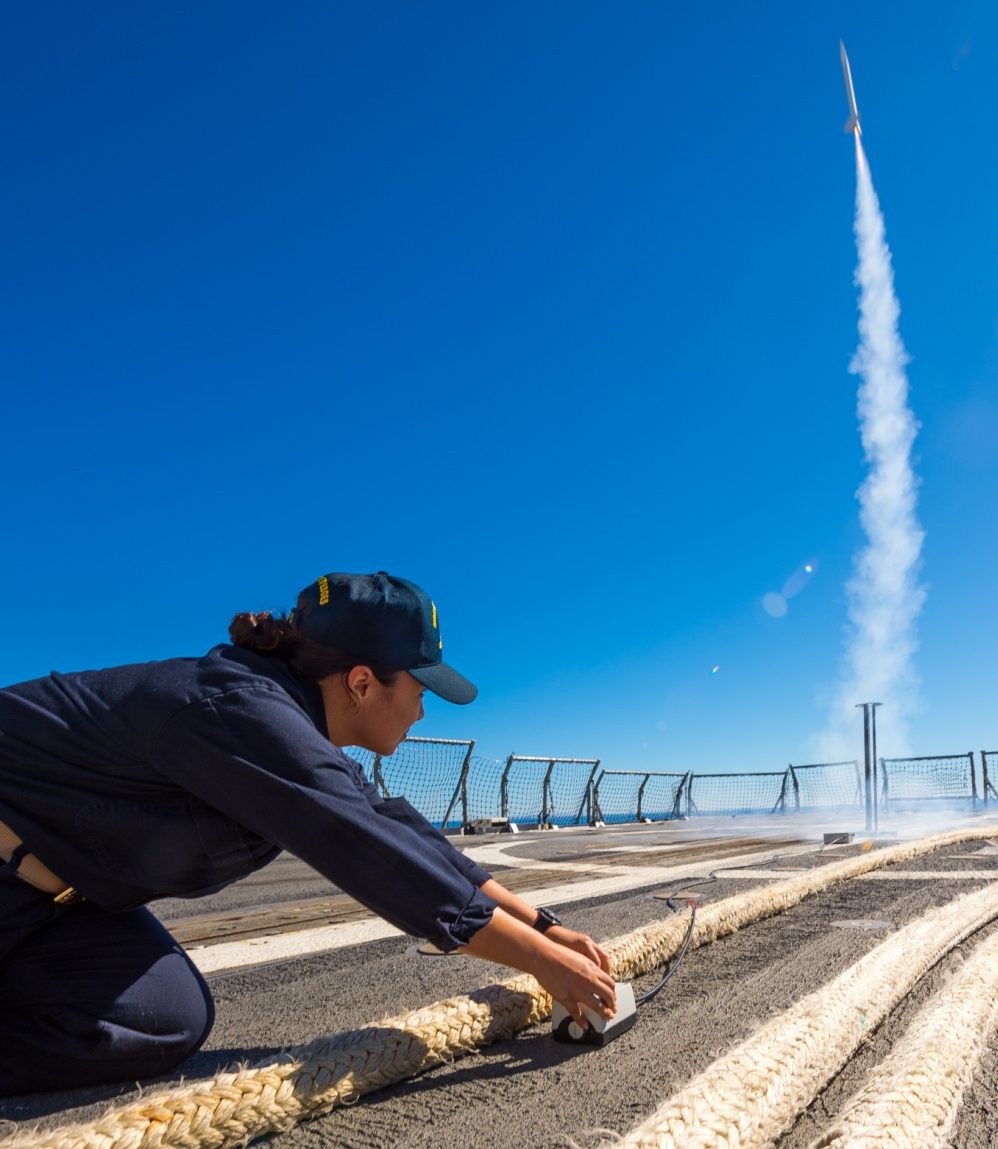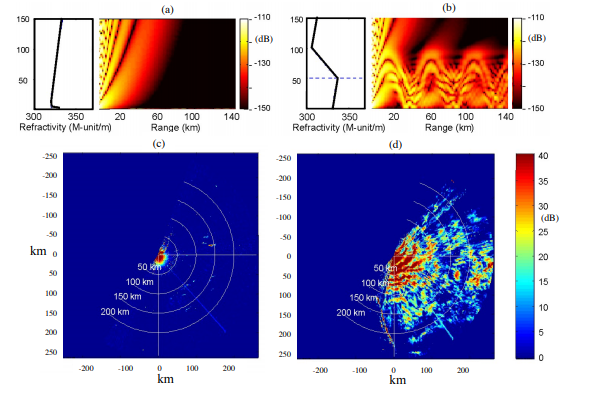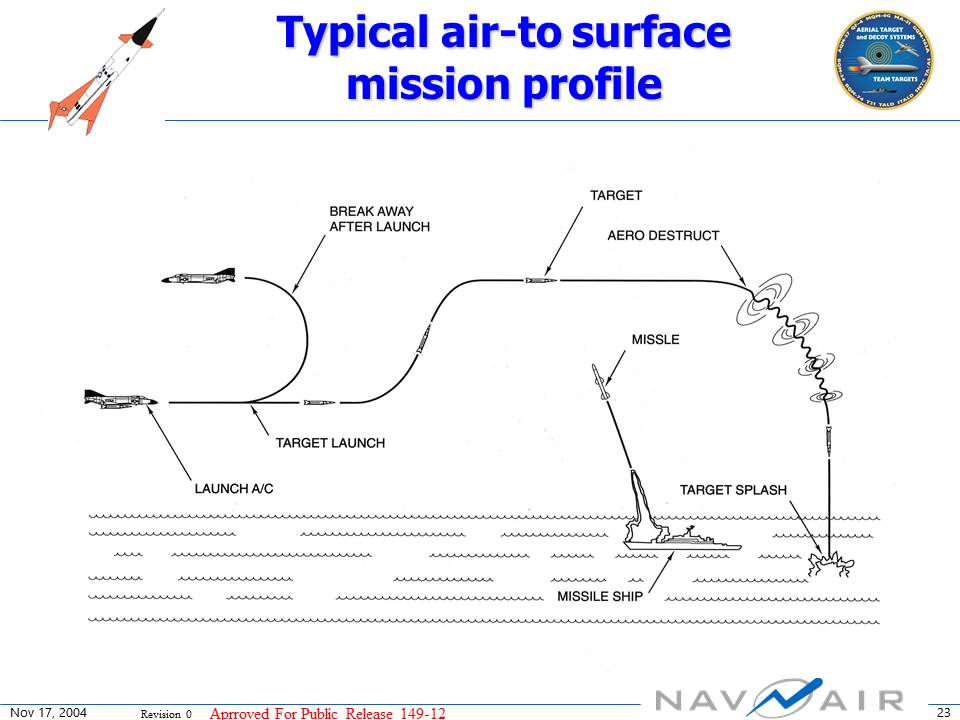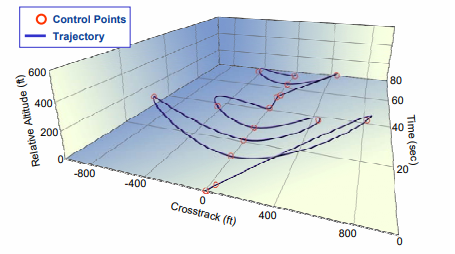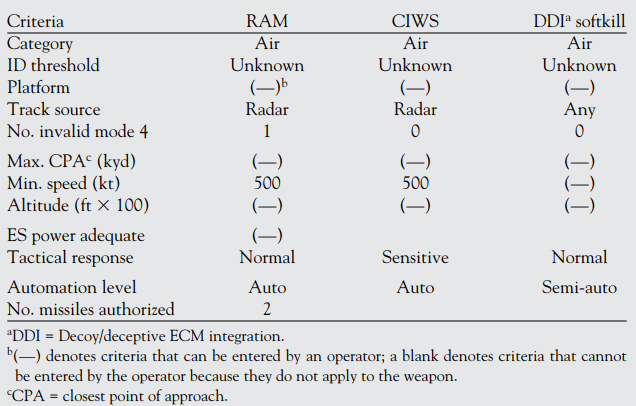By LCDR Arlo Abrahamson
Introduction
“Relationships don’t stay the same, they either get better or they get worse.” These were the words of U.S. Defense Secretary James Mattis at the 2018 Shangri-La Dialogue in Singapore. Mattis was speaking about the importance of avoiding the status quo in America’s defense relationships by exercising “strategic reliability” through enduring military presence and meaningful security cooperation.1
Mattis’ concept of strategic reliability is an appropriate frame to examine the future of U.S. seapower in the Indo-Pacific. America’s rise as a naval power was predicated on the ability to form alliances and partnerships with nations that believe cooperative maritime security benefits common interests and enhances regional and global stability. The backbone of these alliances and partnerships derives from a fundamental belief in freedom of the seas, a central tenant of the international rules-based order, to which the former Commander of the Indo-Pacific Command Admiral Harry Harris said “ensures all nations, big or small, have equal access to the shared domains.”2 Since the fall of the Soviet Union, in what the late Charles Krauthammer described as “America’s unipolar moment,” U.S. seapower, along with the alliances and partnerships that bolster its preeminence in the Indo-Pacific, has largely gone unchallenged.3 However, with a rising China and its focus on building its own world-class, blue water navy, the future of U.S.-led, cooperative maritime security in the Indo-Pacific cannot be taken for granted.
The underlying question is can U.S. seapower with its existing framework of maritime alliances and partnerships remain the leading guarantor of Indo-Pacific maritime security, or will China take on that role? The collective wisdom is that the U.S. Navy will continue to lead and foster cooperative maritime security efforts in the Indo-Pacific, but only with a careful reexamination of how the U.S. projects its seapower and postures itself in a new era of great power competition with China.
Alliances and Partnerships, the Foundations of U.S. Seapower
With the presence of the U.S. Asiatic squadrons in the 19th century, the U.S. Navy made its debut in the Indo-Pacific region. Like most global navies, the U.S. Navy emerged in the region to protect and promote America’s growing interests in commercial trade and diplomatic relations. From the U.S. Navy’s debut in the region, alliances and partnerships helped bolster and sustain U.S. seapower in the Indo-Pacific. Those alliances and partnerships were cemented with the spoils of victory in World War II, with the establishment of U.S. naval bases and forward operating locations throughout the region.
Today, the U.S. Navy enjoys unprecedented access to the Indo-Pacific region, with naval forces forward or rotationally deployed in Guam, Japan, Korea, Okinawa, and Singapore, and visiting force agreements in the Philippines and Australia. This access enables the U.S. Navy’s power projection in the region and yields opportunities for the U.S. to play a constructive role in strengthening cooperative maritime security networks by, with, and through the assistance of allies and partners.
In February 2018 while underway in the South China Sea, Rear Admiral John Fuller, commander of the USS Carl Vinson Strike Group, told a group of academics and reporters that “nations in the Pacific are maritime nations. They value stability…That’s exactly what we are here for. This is a very visible and tangible presence. The United States is here again. U.S presence matters.”4
The prosperity and upward economic trajectories of Indo-Pacific nations are a byproduct of the relatively stable period that emerged after World War II. This prolonged period of regional stability was underwritten for the last 75-plus years in part due to unfettered U.S. naval presence. Sustained by a strong network of alliances and partnerships, the U.S. Navy has focused its forward presence on deterring conflict, ensuring access to the global commons, protecting U.S. commerce, while promoting U.S.-led security cooperation.5
The U.S. Cooperative Strategy for 21st Century Seapower underscores the value of maritime security cooperation directly tied to U.S. interests, particularly in the economic and security spheres:
“By expanding our network of allies and partners and improving our ability to operate alongside them, naval forces foster the secure environment essential to an open economic system based on the free flow of goods, protect U.S. natural resources, promote stability, deter conflict, and respond to aggression.”6
The Indo-Pacific region features a complex stratosphere of global and economic interests with growing importance for the U.S., China, and the international community at large. The United Nations estimates more than 80 percent of global trade by volume travels by sea; with 60 percent of seaborne trade volume traveling through the Indo-Pacific region.7 Moreover, $5.3 trillion in seaborne trade passes through the South China Sea each year, nearly a third of all global trade. This includes $1.2 trillion in trade destined for U.S. ports and 80 percent of China’s hydrocarbons that pass through the strategic chokepoints of the Straits of Malacca and Singapore and onward to the South China Sea.8
In such a dynamic maritime environment, the existing framework of rules, standards, norms and laws that assures free access to the global commons and open sealanes remains essential for regional stability. James Manicom notes that “free access to the seas fosters not only economic growth within individual East Asian states, but also the creation of robust economic interdependence between East Asian states that creates a powerful disincentive for war.”9 A strong belief in free and open sealanes has not lost its relevance among Indo-Pacific nations, even with the threat of a rising and revisionist power in China that seeks to adjust the international order to benefit its own interests. Accordingly, great power competition with China presents both challenges and opportunities for the U.S. Navy in the Indo-Pacific. While Indo-Pacific nations make room for China’s rise as a maritime power, U.S. seapower should remain focused on preserving the rules-based order while enhancing stability that binds its existing network of allies and partners.10
Forward Presence and Cooperation in the Midst of a Rising Maritime Power
A rising Chinese maritime power harkens to the realities of geo-strategic position. The U.S. Navy serves as a mostly non-resident, yet established maritime power in the Indo-Pacific while China is embracing its role as the resident, emerging maritime power.
Against the backdrop of the routine presence of the U.S. Navy across the Indo-Pacific, nations are increasingly hosting the People’s Liberation Army-Navy (PLAN) in their waters and ports. The PLAN is growing rapidly as a regional maritime powerhouse and blue water navy, and nations in the Indo-Pacific know they must cooperate and work with their Chinese neighbors at sea to maintain cordial and friendly relationships with the fledgling superpower.
In August 2018 China conducted its inaugural multilateral exercise with Association of Southeast Asian Nations (ASEAN) noting the maritime drills aimed “to expand China and ASEAN’s military communications and security cooperation.”11 Singapore, currently at the helm of the rotational leadership of ASEAN, lauded the exercise as a notable first step in enhancing interoperability with the PLAN. “At the end of the exercise, we have strengthened our ability to work together,” said Colonel Lim Yu Chuan, commanding officer of the Singapore Navy’s 185 Squadron.12

Despite the emergence of China as a rising maritime power, the U.S. still embodies its role as the principal leader of cooperative maritime security in the Indo-Pacific region. The U.S. Navy facilitates multilateral, cooperative security engagements such as Rim of the Pacific (RIMPAC), Malabar alongside the Japanese and Indian navies, and Southeast Asia Cooperation and Training (SEACAT) that enables the U.S. to operate with ASEAN and South Asian partners such as Sri Lanka and Bangladesh. When manmade and natural disasters afflict the region, nations in the Indo-Pacific frequently request the assistance of the U.S. Navy in relief operations such as in the Philippines after Typhoon Haiyan in 2013, the search and rescue of Air Asia Flight 8501 that crashed into the Java Sea in 201, and more recently to assist in flood relief efforts in Sri Lanka in 2017.
Collin Koh, maritime studies researcher at the Rajaratnam School of International Studies (RSIS), notes that nations in the Indo-Pacific generally regard U.S. naval presence as constructive in promoting collaborative partnerships, capabilities, and stability:
“The U.S. naval presence is still seen as a stabilizing element in a geopolitically uncertain time in the region. Operationally, regional militaries see their engagements with the U.S. as a vehicle for extracting knowhow, expertise, and best practices for their own capacity building processes.”13
The U.S. Navy should use its credibility in the Indo-Pacific to advance the National Defense Strategy that advocates for strengthening the U.S. network of alliances and partnerships through “mutually beneficial collective security,” “reinforcing regional coalitions and security cooperation,” and “deepening interoperability.”14 Indo-Pacific nations have no choice but to cooperate with China as the emerging, resident maritime power, but that doesn’t diminish the U.S. Navy’s role in the region. In fact, fears of how China is using its rising maritime power may even strengthen it.
Focusing on Relationships as a Means to Balance China’s Influence
Edward Luttwak postulates that seapower during peacetime equates to “passive suasion” that can reassure allies and/or influence the behavior of nation states.15 In an increasingly competitive and contested maritime environment in the South China Sea and
Northeast Asia, the U.S. Navy’s mere presence in the region is increasingly viewed by nations within the context of strategic hedging of great power capabilities. In Richard Fontaine’s view, this hedging is “creating regional security challenges that incentivize cooperation and counterbalancing.”16
While some Indo-Pacific nations are careful to temper their public sentiment regarding U.S. naval presence, countries of the region clearly support U.S. seapower and continue to enable it. James Manicom argues that by virtue of Chinese maritime assertiveness in contested waters, “there is clearly still an appetite for U.S. seapower among East Asian states, which reinforces the legitimacy of American power.”17
In recent years the Philippines, Australia, and Singapore have upgraded their enhanced defense cooperation agreements with the U.S. that allows rotational deployments of ships and aircraft. Moreover, the U.S. has significantly enhanced maritime security cooperation, information sharing, and logistical support agreements with Vietnam, Sri Lanka, and India.18
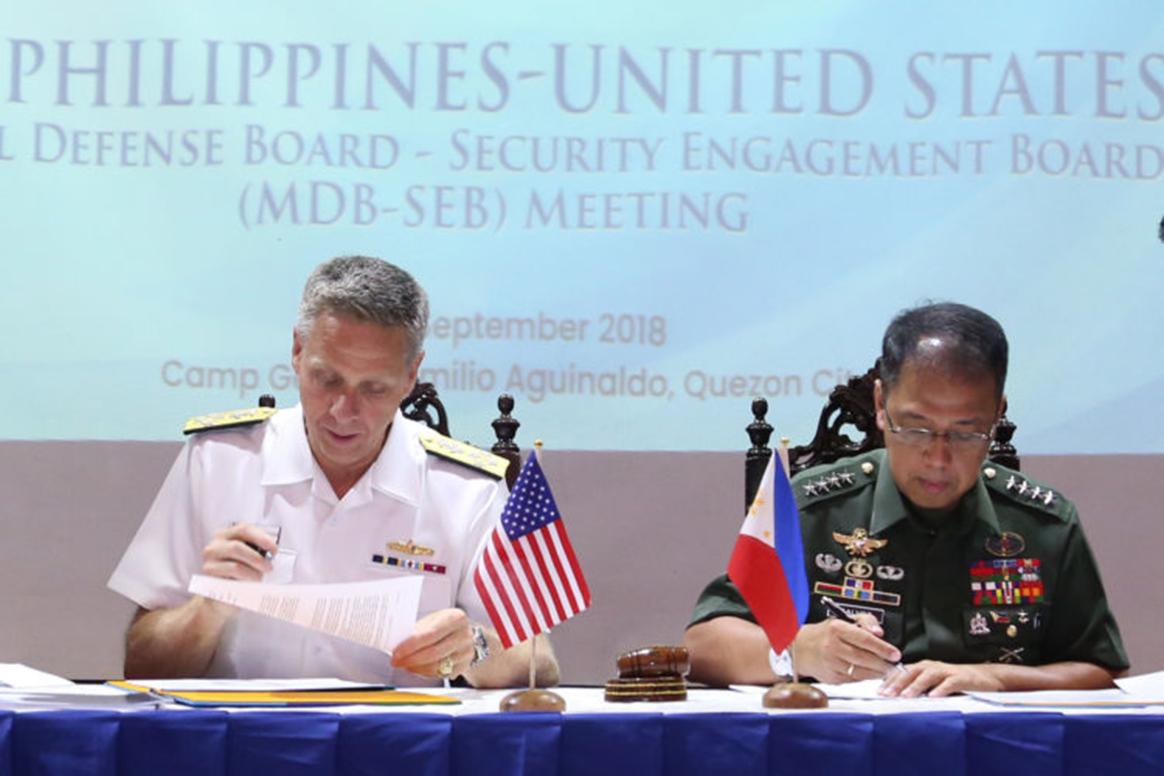
Despite its strong regional security networks and amicable relations with allies and partners, the U.S. Navy cannot take its status quo for granted. An easy assumption may be that maritime alliances and partnerships can endure through periods of non-engagement when priorities for naval platforms and people are needed for other pressing operations. This would be a strategic mistake for the U.S. in an environment where China is eager to fill even the smallest void left by the U.S. Navy’s competing priorities. Consequently, U.S. strategic choices in projecting routine naval presence and its investment in long-term military relationships correlate directly with Mattis’ concept of strategic reliability. On the operational and tactical levels, this translates to meaningful and routine maritime security cooperation where relationships form the foundation of trust for the alliance or partnership.
Dzirhan Mahadzir, former researcher at Malaysia’s Maritime Institute, notes that while fostering relationships through routine engagement is paramount, these relationships and persistent naval presence also “dissuades or prevents countries like China from diminishing the U.S. role in leading cooperative security.”19
Every time the U.S. Navy conducts a security engagement or exercise with its allies and partners, it sends a strategic message that aligns with America’s stated commitments to the Indo-Pacific. Moreover, in the age of tweets and 24-hour news cycles where organizational memories are short, the Navy’s engagement with allies and partners must be routinely executed to demonstrate U.S. resolve and commitment. Rest assured, U.S. friends and allies will take note of how it postures its seapower and forward presence to match words with deeds.
What could marginalize U.S. Seapower in the Indo-Pacific?
The task of fulfilling global commitments remains a challenge for the U.S. Navy with competing priorities both globally and domestically. Critics can point to the findings of the Navy’s reviews of surface force incidents that the U.S. 7th Fleet is overstretched in both commitments and platforms, a challenge complicated by the sheer geography of plying the waters of a vast Indo-Pacific operating area.20
After at-sea collisions by USS Fitzgerald near Japan and USS John S. McCain in the Singapore Strait, China took full advantage of the disarray and characterized the U.S. Navy in its state-run press as dangerous and undependable for Indo-Pacific nations.21 The U.S. Navy cannot be everywhere, and it certainly is not immune to accidents, but the solution to restoring any lack of faith in U.S. seapower in the Indo-Pacific is to remain engaged and double down on the U.S. commitment to free and open seas and regional stability by way of its alliances and partnerships.

William Choong, Senior Fellow for Asia-Pacific security at the International Institute for Strategic Studies (IISS), posits that “Southeast Asian countries usually prioritize economic development over U.S. military presence in the region” as means for advancing their upward economic mobility.22 This trend in the region will continue and China is equipped to assert its economic leverage through ambitious programs such as the One-Belt, One Road initiative, which could be a potent undercurrent in nations’ decisions to engage with the U.S. in the maritime security sphere.
However, even with growing economic ties between Indo-Pacific nations and China, Collin Koh notes China’s economic influences have not discouraged most allies and partners from working closely with the U.S. in security cooperation engagements:
“Even as Indo-Pacific countries move toward China in economic ties, we don’t see a let down in enhancing and building security relations with the U.S. This can only mean these governments are intent on keeping these military ties with the U.S. in the midst of their wariness towards a growing Chinese shadow.”23
The U.S. Navy possesses adequate technology, diverse naval platforms, and perhaps most important, the creativity and ingenuity in its people, to remain relevant and engaged with allies and partners across the Indo-Pacific and retain its principal leadership role. Yet with the realities of great power competition, skepticism will not cease completely, and tepid or inconsistent engagement will cast doubts of U.S. resolve. In essence, any marginalization of U.S. seapower in the Indo-Pacific will be a strategic choice, not a preordained destiny.
Practical Considerations for Sustaining U.S. Seapower
The National Defense Strategy contends the U.S. military must “outthink, out maneuver, out-partner, and out-innovate” America’s adversaries and competitors.24 In this vein, practical considerations for cooperative maritime security engagement should be considered carefully. The U.S. Navy must continue to demonstrate credible, lethal, and distributed seapower.25 This must be accomplished using the full breadth of naval power and associated platforms that can operate adeptly in the littorals, global commons and in contested grey zone spaces.
The 3rd Fleet forward initiative is a prudent step to deploy additional naval assets to the Indo-Pacific to enhance presence operations and maritime security cooperation engagements and exercises. Moreover, the U.S. Navy should continue to harness the employment of Military Sealift Command (MSC) ships in security cooperation engagements ranging from logistics interoperability to operating with partner navies at sea. Progress has already been made with the inclusion of expeditionary fast transport ships (EPF) and expeditionary transfer docks (ESD) in a number of exercises and engagements throughout the region.26 The value of security cooperation with small, expeditionary units should not be underestimated. Diving and salvage subject matter expert exchanges, explosive ordnance disposal team engagements, civil engineering exchanges with Seabees, and small boat operations are in high demand for many of the U.S. Navy’s partners in the region, particularly in South and Southeast Asia.27
Lastly, the U.S. Navy should seek more opportunities to work jointly with other U.S. military services during cooperative security engagements. Partnering with other U.S. services, including the U.S. Coast Guard, increases opportunities, scope, and the quality of engagements with allies and partners while prudently managing finite resources in manpower and available platforms.
In practical terms, maritime security cooperation is military diplomacy. As with all forms of national diplomacy, the task is never quite finished.28 The byproduct of a broad cooperative maritime security strategy is cumulative when measuring the value of all engagements and activities. The late Admiral J.C. Wylie posits that cumulative operations, much like effective diplomacy, can advance national interests systematically:
“…the entire pattern is made up of a collection of lesser actions, but these lesser or individual actions are not sequentially interdependent. Each individual one is no more than a single statistic, an isolated plus or minus, in arriving at the final result.” 29
Wylie’s view of cumulative operations provides a suitable template to assess the value of cooperative maritime security engagements across the Indo-Pacific. Engagements large and small all matter when assessed holistically and contribute toward the greater goal of advancing U.S. interests and strengthening seapower.
More importantly, the cumulative effect of sustained U.S. naval presence and engagement sends an important message to allies, partners, and adversaries alike that America is an Indo-Pacific maritime power that remains committed to its role as the principle guarantor of regional stability.
Conclusion
The future of U.S. seapower in the Indo-Pacific is filled with challenges yet ripe with opportunity. As the National Defense Strategy notes, “the willingness of rivals to abandon aggression will depend on their perception of U.S. strength and the vitality of our alliances and partnerships.” 30
China’s rising maritime power should not threaten U.S. maritime superiority. U.S. seapower will only be marginalized by inaction induced by lack of will or by strategic choice. While both the U.S. and China have an important role to play in preserving peace in the Indo-Pacific, the U.S. Navy is uniquely positioned to remain a regional leader of cooperative maritime security due to the values it promotes and the stability it underwrites through sustained naval presence.
Competing operational priorities and finite resources are a reality for a forward-deployed maritime power. Yet these challenges should not deter routine security cooperation with allies nor should it equate to neglect of smaller, less strategic maritime partners. China’s growing economic influence, sometimes coercive in nature, also raises doubts about the sustainability of U.S. alliances and partnerships.
The future of U.S. seapower in the Indo-Pacific remains viable so long as it remains embedded in the alliances and partnerships that sustain it. This requires routine naval presence, reassurance when necessary, meaningful military relationships, and as Secretary Mattis suggested, these actions culminate in strategic reliability. In this frame, U.S. seapower in the Indo-Pacific remains as relevant today as it ever was.
Lt. Commander Arlo Abrahamson is a career public affairs officer with the U.S. Navy and current graduate student at the U.S. Naval War College in Newport, Rhode Island. He has served operational and staff tours in Japan, Korea, and Singapore with the U.S. 7th Fleet operating as a spokesperson for the U.S. Navy while supporting major exercises and security cooperation engagements across the Indo-Pacific. Abrahamson holds a Masters Degree in Mass Communication from San Diego State University.
References
1. James Mattis, Remarks at Plenary Session of Shangri-La Dialogue, 2 June 2018, accssed 25 Sept, 2018, https://dod.defense.gov/News/Transcripts/Transcript-View/Article/1538599/remarks-by-secretary-mattis-at-plenary-session-of-the-2018-shangri-la-dialogue/
2. Harry B. Harris, Keynote Remarks at the Galle Dialogue, 28 Nov 2016, accessed 11 Sept 2018, http://www.pacom.mil/Media/Speeches-Testimony/Article/1013623/sri-lanka-galle-dialogue/
3. Charles Krauthammer, The Unipolar Moment, 20 July 1990, accessed 22 Sept 2018, https://www.washingtonpost.com/archive/opinions/1990/07/20/the-unipolar-moment/62867add-2fe9-493f-a0c9-4bfba1ec23bd/?utm_term=.d50667a20b8a
4. Agence France Press (AFP), U.S. Admiral: U.S. Presence Matters, 15 Feb 2018, accessed 15 Sept 2018, https://www.scmp.com/news/asia/south-asia/article/2133506/us-presence-matters-admiral-aboard-uss-carl-vinson-says-carrier
5. U.S. Navy. A Cooperative Strategy for 21st Century Seapower, 9 March 2015. Accessed 10 September 2018, http://www.navy.mil/local/maritime/150227-CS21R-Final.pdf
6. U.S. Navy. A Cooperative Strategy for 21st Century Seapower. 9, March 2015. Accessed 10 September 2018, http://www.navy.mil/local/maritime/150227-CS21R-Final.pdf
7. CSIS Chinapower, How Much Trade Transits the South China Sea, 2018, accessed 14 Sept 2018, https://chinapower.csis.org/much-trade-transits-south-china-sea/
8. New York Times, “The South China Sea, explaining the dispute,” 15 July 2016, accessed 20 Sept 2018, https://www.nytimes.com/2016/07/15/world/asia/south-china-sea-dispute-arbitration-explained.html
9. James Manicom, “Chinese and American Seapower in East Asia, Is Accomodation Possible?,” Journal of Strategic Studies, 37, No. 3 (2014): 345-371. DOI: 10.1080/01402390.2014.900753
10. Tan Weizhen, “China’s military and economic power cannot be denied and the U.S. has to make room,” 17 Sept 2018, accessed Sept 25, https://www.cnbc.com/2018/09/18/china-military-is-growing-us-must-make-room-eurasia-groups-kaplan.html
11. Fathin Ungku (Reuters News), “China, Southeast Asia Kick Off Inguaral Mariime Drills”, Reuters.com, 3 Aug 2018, accessed 11 Sept 2018, https://www.reuters.com/article/us-asean-singapore-navy/china-southeast-asia-kick-off-inaugural-maritime-drills-idUSKBN1KO0S7
12. IBID.
13. Dr. Collin Koh (Rajaratnam School of International Studies RSIS), email correspondence to author, Sept 21, 2018.
14. U.S. Department of Defense, U.S. National Defense Strategy, Washington, D.C.: Secreatary of Defense, 19 Jan 2018.
15. Edward Luttwak, “Political Uses of Seapower,” Studies in International Affairs (The Johns Hopkins University Press), 23 (1974).
16. Richard Fontaine, “Networking Security in Asia,” The Washington Quarterly, Vol. 40, No. 3 (2017), 45-62.
17. James Manicom, “Chinese and American Seapower in East Asia, Is Accomodation Possible?,” Jounal of Strategic Studies 37, no. 3 (2014), 345-371. DOI: 10.1080/01402390.2014.900753
18. Congressional Research Service, “U.S. Strategic and Defense Relationships in the Asia-Pacific Region,” Foreign Affairs, Defense, and Trade Division, January 2007, accessed Oct 1 2018. https://fas.org/sgp/crs/row/RL33821.pdf
19. Dzirhan Mahadzir (Maritime Institute of Malaysia), email correspondence to author, 22 Sept, 2018.
20. U.S. Navy, Comprehensive Review of Recent Surface Force Incidents, March 2018, accessed 19 Sept 2018, https://www.public.navy.mil/usff/Pages/usff-comprehensive-review.aspx.
21. Hueling Tan, “USS John McCain collision met with applause in China, state run media reports”, CNBC.com, 21 Aug 2017, accessed 26 Sept 2018, https://www.cnbc.com/2017/08/21/uss-john-s-mccain-accident-created-applause-chinese-state-media.html.
22. Dr William Choong, email correspondence to author, Oct 20, 2018.
23. Dr. Collin Koh (RSIS), email correspondence to author, Sept 21, 2018.
24. U.S. Department of Defense, U.S. National Defense Strategy, Washington, D.C.: Secretary of Defense, 19 Jan 2018.
25. Thomas Rowden, VADM, Peter Gumataotao, RDML, Peter, Fanta, RDML, “Distributed Lethality”, U.S. Naval Institute, January 2015, accessed Sept 24, 2018. https://www.usni.org/magazines/proceedings/2015-01/distributed-lethality
26. Mahadzir, Dzirhan, “U.S. Plans to Expand Naval Engagements in Southeast Asia using LCS and EPFs”, USNI News, 21 Nov 2017, accessed 24 Sept, 2018, https://news.usni.org/2017/11/21/u-s-plans-expand-naval-engagements-southeast-asia-using-littoral-combat-ships-epfs
27. Doornbos, Caitlin, “Navy and Marine Corps begins this Year’s CARAT Drills in Thailand”, Stars and Stripes, 14 June 2018, accessed 27 Sept, 2018. https://www.stripes.com/news/pacific/navy-marine-corps-begin-this-year-s-carat-drills-in-thailand-1.532680
28. Adams, Gordon, Murray, Shoon, Mission Creep, The Militarization of Foreign Policy? (Washington, D.C.: Georgetown University Press, 2014).
29. J.C. Wylie, Military Strategy: A General Theory of Power Control (Annapolis: Naval Institute Press 1989), 22.
30. U.S. Department of Defense, U.S. National Defense Strategy, Washington, D.C.: Secretary of Defense, 19 Jan 2018.
Featured Image: YOKOSUKA, Japan (June 14, 2018) Hospital Corpsman 2nd Class Joey Legaspi (left) verifies a Japanese Maritime Self Defense Force (JMSDF) patient during a mass patient disembarkation bilateral training exercise between the United States and JMSDF. (U.S. Navy photo by Mass Communication Specialist 2nd Class Kelsey L. Adams/Released)

